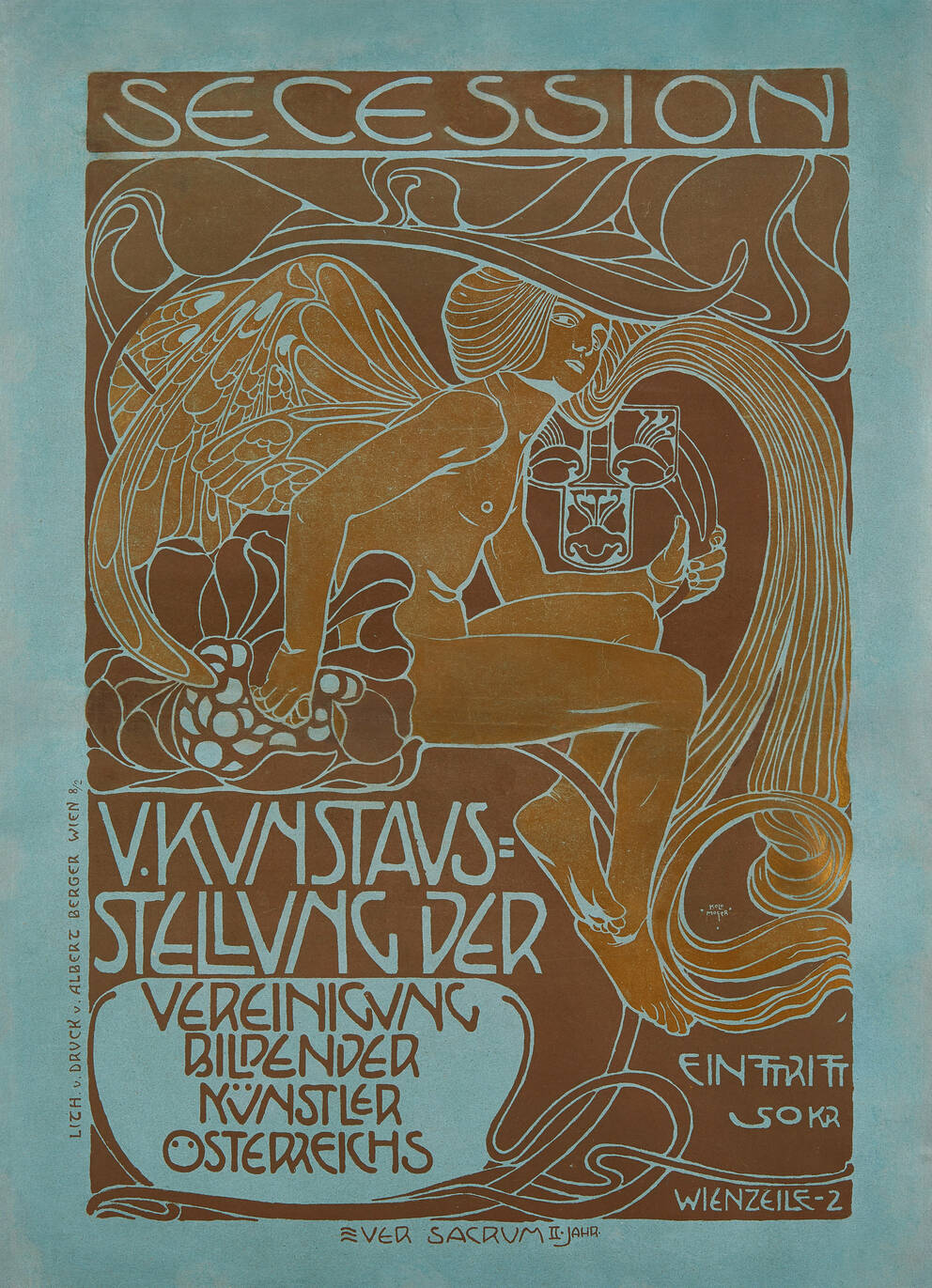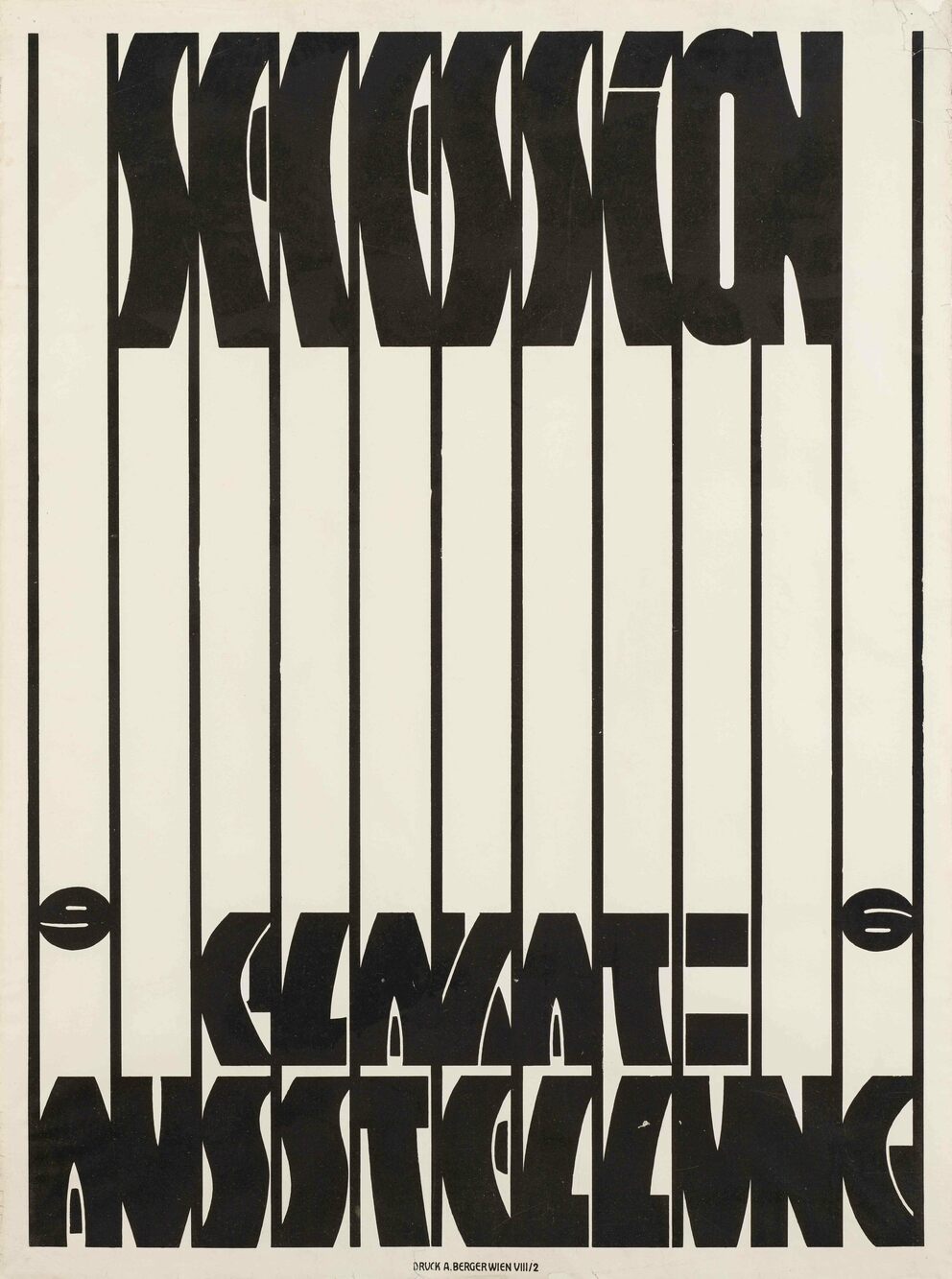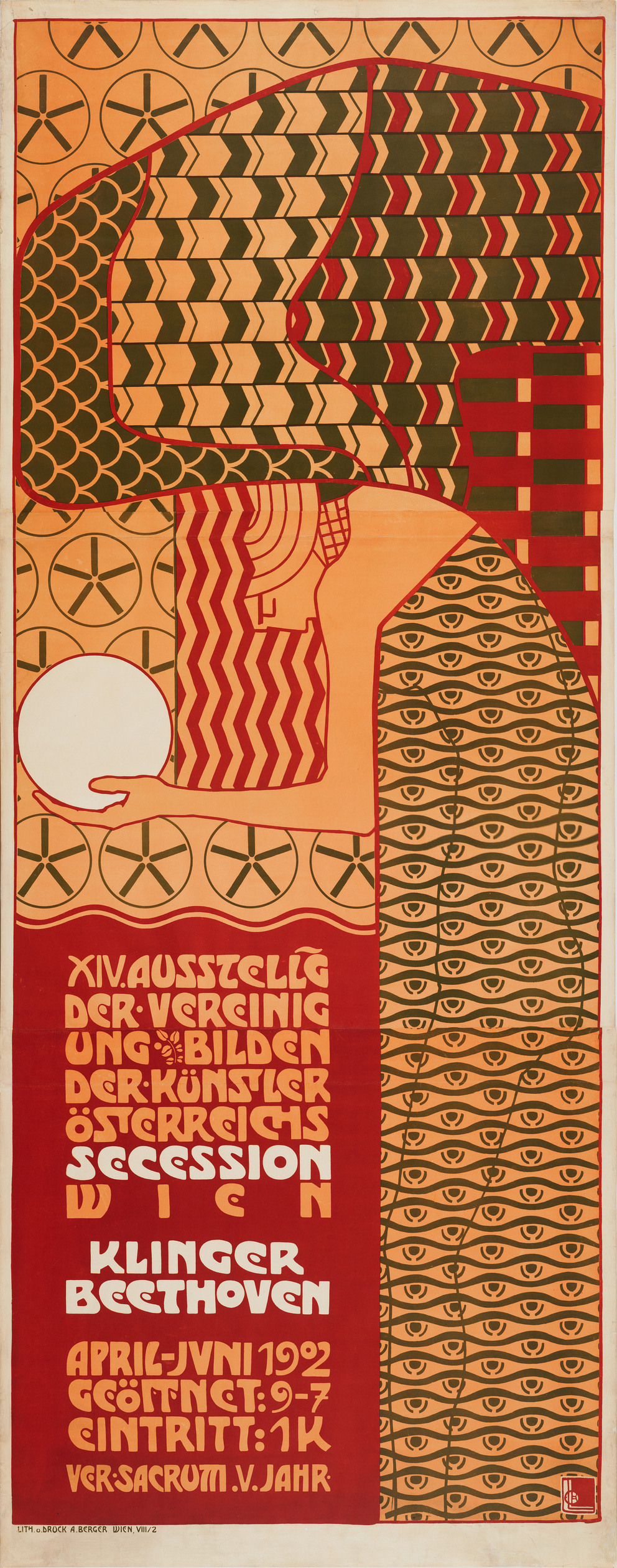Poster Art
Art on the Street
The heyday of poster art in Vienna 1900 was expedited, among other factors, by the use of new chromolithographic processes which allowed for the comparatively cheap and therefore wide dissemination of this young medium. As a type as “wall art”, accessible to everyone, and as the “poor man’s art gallery”, poster art – beyond its mere promotional purpose – also fulfilled a democratic role and served as a reflection of an accelerating, urban everyday culture. The exhibition posters designed by the Vienna Secession, especially those by Koloman Moser (1868–1918) and Alfred Roller (1864–1935), represent the cutting edge of a fleeting but already back then highly collectible “art on the street” (Ludwig Hevesi). The hallmarks of these early Jugendstil posters were the dispensation with perspective and shadows, the highlighting of planes and symmetry, and the tendency towards geometrical stylization. The ground-breaking poster designs created by Oskar Kokoschka (1886–1980) and Rudolf Kalvach (1883–1932) for the Kunstschau 1908 heralded the advent of a markedly more expressive, liberal form language in Viennese poster art.





